Read “AI as Marketer’s Creative Sidekick” here.
During these challenging periods, the capabilities of Generative AI become particularly compelling. AI can drive the creative process and stand as a critical ally for lean teams striving to do more with less.
With AI’s advanced algorithms, marketing strategies can be designed and executed with precision and personalization that traditionally would require a larger workforce. By automating routine tasks and generating content at scale, AI helps keep the marketing engine running smoothly, ensuring that even with a smaller team and tighter budget, the quality of engagement and brand presence doesn’t just maintain, but thrives.
Generative AI thus offers a dual advantage in tough times: it empowers marketers to maximize their existing resources while opening avenues for innovation that keep businesses competitive.
While many might not agree with that statement, we should all agree that AI holds tremendous potential for marketers, offering a range of applications that can revolutionize marketing strategies. Some of these are:
Creative Content Generation
Generative AI enables the automated creation of engaging and personalized content at scale. Marketers can leverage generative AI to generate product descriptions, social media posts, and email subject lines. Or even entire ad campaigns tailored to individual customer preferences.
Design and Visuals
Generative AI algorithms can generate visually appealing designs, logos or graphics that align with a brand’s identity. This streamlines the creative process and empowers marketers to experiment with various visual elements quickly.
Personalization and Targeting
Generative AI models can analyze vast amounts of customer data to create personalized marketing assets. By understanding customer preferences, generative AI can dynamically generate content that resonates with individuals on a deeper level, enhancing customer engagement and conversion rates.
Campaign Optimization
Generative AI can optimize marketing campaigns by automatically testing and refining content variations. By analyzing data on customer responses and interactions, generative AI can identify the most effective messaging, visuals, or CTAs to maximize campaign performance.
AI is already in use, in more ways than you know
Even if AI has been around for years on years, the technology has exploded in the last year or so. With the introduction of software and services like ChatGPT, Midjourney, and DALL·E, you no longer need a degree in computer science, but instead anyone can use the tools. And if what you see, so far, is mostly images and text outputs, AI-created music and video are coming fast. Really fast!
In the marketing world, this has been obvious in seeing the first “open AI campaigns” on the market. There have been quite a few examples, among others from giants such as Heinz, McDonald’s, Subway, and Burger King, just to mention a few.
That, however, is only the glossy campaigns that are outspoken AI-creations. And they will mostly disappear when the hype is slowing down. The real work and implementations are happening behind the scenes.
We have for example been working with clients on automatic content adaptation on our digital screens. In the simplest implementation, this means that content is chosen depending on the time of day or weather outside. However, we already see possibilities to also create personalized content for individual customers. The content can of course be created on the fly by the AI.
If the technology around generative AI looks promising today, it will for sure blow our minds shortly.
The future of marketing is being rewritten by AI, and those ready to leverage its full potential will find themselves leading the charge. The question for us all is not if we will step into this new era, but how we will shape its unfolding narrative.
Read our next article “AI as a Supportive Tool for Marketers During Recessions” that will be published April 25.

The world is moving fast and to stay ahead in today’s rapidly evolving landscape, we all need to accept and embrace emerging technologies. Especially if the technology has the potential and promise to change and rewrite the rules completely. And that is exactly what Generative AI could (and possibly should) do.
What is generative AI and why is it important?
Generative AI refers to a branch of artificial intelligence that focuses on creating models capable of generating new and original content. Unlike traditional AI models that rely on predefined rules or patterns, generative AI leverages advanced algorithms and deep learning techniques to learn from existing data and produce new, creative outputs. These outputs can include anything from images and videos to music, text, or even entire marketing campaigns.
In short, generative AI is pretty much what all the fuzz has been around the last year. And looking at how fast it has progressed, both as a technology as well as interest and acceptance in the public eye, it’s something that is here to stay. In one form or another.
Is generative AI going to take over?
Yes. And again. Probably no. Generative AI has everything needed to take over. At least if you look at it from a theoretical point of view. It’s super-fast. It’s (will soon be) super-accurate. It’s super-creative.
Wait, what? Is it really that creative?
In terms of it being able to never repeat itself – absolutely. In terms of coming up with something new, rather than something “never done” is a completely other issue. This is a whole other discussion on the topic of what defines creativity, and we will save that for another time.
However – AI is without a question “creative enough”. Maybe not for coming up with solutions of general problems. But for solving people’s challenges, often at work, often due to lack of time. It can save lots of time and work hours for the marketing department.
By combining machine learning and creativity, generative AI empowers marketers to unlock new levels of personalization, automation, and creative ideation. And this is exactly why you, if you’re into marketing, need to embrace and learn the technology now, to plan accordingly. Many are already far ahead in the game.
Are you in the front or back row of AI?
According to HubSpot 90% of marketers who use AI say it’s effective for content creation. And 67% of marketers who use AI use it to create content faster – like writing quicker copy, conducting faster research, or generating ideas – and 50% also believe it makes their content better.
The numbers are clear. Many already use AI in their daily work or at least are researching and planning how it can be best implemented. And if you’re not, you’re falling behind.
Take Sephora, for instance, a giant in the beauty industry that has successfully leveraged AI to change the way customers shop for cosmetics. Their “Virtual Artist” app uses augmented reality and facial recognition to allow users to try on makeup virtually, making the shopping experience both interactive and personalized. Beyond this, Sephora’s AI algorithms analyze shopping behaviors to predict trends, manage inventory more efficiently, and tailor product recommendations, creating a seamless and customized journey for every customer.
We will go through the promises of AI in a short series of articles on our Knowledge Hub for three simple reasons:
- Digital Signage and AI is a perfect match!
- This is part of our learning curve.
- The more people and companies that start using AI tools, the faster the development and refinement of the technology will be.
As we investigate AI’s potential, it’s clear that its creative power is reshaping marketing as we know it. The real question is how we harness this potential in our strategies, a topic we’ll explore in our next article. Get ready to dive into the practical applications of AI that can elevate your marketing from theory to action.
The future of marketing isn’t on the horizon—it’s already here.
Follow us on LinkedIn for continuous updates.
Stay tuned for the next article “How Generative AI is Redefining Resourcefulness” April 18.

What message did Visual Art want to convey at the conference?
– Visual Art’s message at the conference was to encourage everyone to embrace Instore Retail Media. The company firmly believes that Instore Retail Media is a crucial part of the future of retail. Visual Art considers this area to be neglected despite high demand from the market. The company is confident that Instore Retail Media will continue to grow and is a perfect opportunity for anyone wanting to increase their visibility, improve customer experience, and boost sales.
What are your takeaways?
– At the conference, I noticed that most of the attendees were not familiar with Retail Media and were not using it. The few who were exploring it were doing so through their digital platforms. Although there was a lot of interest, the lack of knowledge and organizational resources were limiting its adoption.
What trends and opportunities from this year’s Kjøpesenterkonferansen will you be bringing with you?
– I took away many key points from the conference, but the one that stood out to me the most is that customer experience remains a top priority. With the current economic downturn, many businesses are struggling with lower profitability. Considering this, it is even more crucial to attract customers to physical stores and provide them with an elevated experience that is relevant to their needs. And a great solution to achieve this is through Retail Media.
Do you want to know more about how InStore Retail Media can elevate your business?
Reach out to Andreas Lind today!

We’re on the edge of a big change with Retail Media becoming a huge deal in marketing. This is going to make Digital Signage important in how companies communicate with their customers. Meijer talked with us about where things are going and how Visual Art is making its mark in this dynamic scene.
The Future of Digital Signage and Visual Art’s Role
Even with everything going on in the world, the Digital Signage industry is expected to grow by about 10%, thanks to advances in AI and Retail Media. Visual Art remains profitable across all divisions despite rapid expansion – a testament to its strength and adaptability.
As Visual Art keeps growing in places like Germany, and Spain, and now aiming for the UK, it’s all about staying relevant and listening to what customers need to reach their business objectives. Meijer emphasizes the importance of shifting industry focus from hardware to software solutions, positioning Visual Art as a pioneer in delivering state-of-the-art Digital Signage software. The company’s new version of Signage Player is set to redefine customer experiences globally.
The Fusion of AI, Retail Media, and Digital Signage
The mix of AI, Retail Media, and Digital Signage is changing the game. Retailers in all kinds of sectors are starting to see the potential of ads in-store, where digital signage become an indispensable asset. The most important is using customer data to make relevant offers, bridging the digital and physical worlds to create a smooth shopping experience.
At the heart of this transformation is a data-driven, programmatic approach to digital spaces, with software playing a pivotal role in uniting data and digital displays. This paradigm shift promises to elevate Retail Media to one of the most significant channels in retail, with AI paving the way for what Meijer refers to as Smart Signage. This approach seeks the most effective solutions for clients and partners, demonstrating AI’s potential to make shopping more relevant and engaging.
Visual Art: Geared for the Future
With a strong foundation built on long-term client relationships and a forward-thinking digital signage software architecture, Visual Art is not just ready for the future; it’s leading the charge. The company’s focus on innovative, efficient solutions ensures it remains at the forefront of the Digital Signage industry.
As we look ahead, the journey of Visual Art led by Pontus Meijer promises not just growth but a relentless pursuit of excellence and innovation, shaping the Digital Signage landscape.
Visual Art emerges not only as a growth company but as a visionary leader driving the industry towards a bright, digital future.
Contact us today if you want to know more about how we can elevate your Digital Signage game!
In his new role, Jorczik is tasked with forging sustainable partnerships and representing Visual Art as a company committed to elevating digital signage experiences.
– My goal is to create an ecosystem of successful and satisfied clients and partners, working closely with us in a trustful and open environment. Visual Art’s unique culture of openness, innovation, and resilience are key drivers for future success, says Nicolas Jorczik, Business Manager at Visual Art Germany.
Visual Art stands out in the digital signage industry for its focus on driving clients’ business objectives and a company culture that fosters creativity, and continuous improvement.
– Visual Art is a dynamic and forward-thinking company with the potential to emerge as the market leader in Germany within a mere couple of years. We stand at the forefront of creating customer-centric Digital Signage solutions for our clients, making us one of the rare end-to-end solution providers worldwide, says Jorczik.
– We’re beyond excited to welcome Nicolas on board as our new Business Manager in Germany. Nicolas’s drive and ambition align perfectly with Visual Art’s goals and culture. His proven track record and forward-thinking approach are exactly what we need as we navigate towards our ambition of dominating the European digital signage market. I’m confident Nicolas’s contributions will be pivotal for our success, reinforcing our commitment to innovation and excellence in customer experiences, says Andreas Ström, Chief Revenue Officer at Visual Art Group.
As Visual Art sets its sights on becoming Europe’s number-one digital signage company by 2026, they recently announced their strategic shift by intensifying their focus on Retail Media. Visual Art has also launched a new version of their digital signage software, Signage Player—a cutting-edge and hardware-agnostic digital signage software designed to transform how businesses communicate visually. Boasting modern architecture that includes a headless CMS, and an API-first architecture will be the powerhouse behind Visual Art’s digital signage solutions and create a solid foundation for growth.
For more information:


Contact us today if you want to know more about how we can help you take your first step within the dynamic digital signage landscape.
Follow us on LinkedIn for continuous updates and latest news
Pioneering the industry with its innovative digital signage software for digital displays, Visual Art has traditionally enabled flawless content management on all types of screens, eliminating the need for external media players. Now they have built on Signage Player to create something even bigger, better, faster, and more efficient. The solution is also completely scalable, which means that all customers, large and small, can get exactly the functionality they can and should demand from modern digital signage software.
– Signage Player has been rebuilt from the ground up, bringing together all the necessary functions in a single platform. We have also ensured almost unlimited possibilities for system integration, increasing flexibility like never before. This version of Signage Player will occupy a unique position in our product portfolio” says Andrew Jarder, Product Owner at Visual Art.
While retaining the user interface that customers know and prefer, to facilitate a smooth transition, there have been major and significant technical upgrades ‘under the hood’. However, the improvements are not all invisible; some features promise to immediately enhance the customer experience.
– The system is built so that virtually any other data source can be connected. This means enormous opportunities to, for example, bring sales or customer data directly into the system and then automate the content based on what individual customers need and want. Above all, it is a giant step in using digital signage even more effectively in Retail Media than what is done today, continues Andrew Jarder.
By being “cloud-native”, the new Signage Player promises optimal functionality and accessibility. It is also a promise of scalability, ready to grow and evolve with the addition of future features.
– Signage Player is a SaaS solution from our side. Being fully cloud-based, we can operate and upgrade individual parts of the software without impacting customers other than those using the specific service or feature, continues Andrew Jarder.
The integration and scalability of the system significantly improve the ability to schedule content, resulting in smarter and more relevant messaging for end customers and simplifying content management for those using the system.
– Retail Media is growing by leaps and bounds, and digital signage are and will be a key component of a broad, sensible investment in this area. With Signage Player, we are ready to support our customers in every step of that journey, concludes Andrew Jarder.
If you want more information about Visual Art Signage Player, you can find it here

In an innovative move to stay relevant and cater to customer preferences, Jordbærpikene’s digital signage solution enables dynamic content adjustment following different times of the day. This dayparting strategy ensures that offerings are as appealing and timely as possible, meeting guests with the perfect suggestions whether for morning coffee, lunch specials, or evening treats.
– “We are incredibly excited about our partnership with Visual Art. Their proven track record in enhancing customer experiences through digital signage in cafes and restaurants speaks volumes. By integrating digital menu boards, we’re not just modernizing our service; we’re transforming how we connect with our guests. Their expertise ensures that our offerings are not only visually appealing but also strategically presented to meet our customers’ needs at exactly the right time. This is a game-changer for Jordbærpikene, enabling us to elevate our guest experience to new heights while driving sales in a highly competitive market”, says Frank Angelvik, CEO at Jordbærpikene.
– “Our Design Studio’s deep understanding of how design and content can significantly impact sales and customer experience is at the core of what we do. At Visual Art, we believe it’s not just about displaying products but about creating a narrative that resonates with the audience. From the size of the font to the number of products displayed, and the use of animations, every detail is meticulously planned to steer the eyes and influence decision-making. We’re thrilled to bring our expertise to the table and help Jordbærpikene elevate their overall guest experience”, says Andreas Ström, Chief Revenue Officer at Visual Art Group.
The integration of digital menu boards goes beyond just visual appeal; it’s a strategic enhancement of Jordbærpikene’s service and atmosphere. Custom-built casings ensure that these digital displays blend seamlessly into the café environments, elevating the ambiance and creating an inviting atmosphere for guests.
Central to this digital transformation is Visual Art’s proprietary digital signage software, Signage Player, which offers Jordbærpikene full control over their digital content across all locations. Signage Player is renowned for its seamless content management, unparalleled integration capabilities, and comprehensive monitoring features, ensuring that Jordbærpikene can effortlessly manage its digital signage fleet.
With a track record of success, Signage Player is trusted by over 250 companies and brands worldwide, including industry giants such as Subway, Kesko, McDonald’s, and Lego, showcasing its effectiveness and reliability across more than 70,000 displays in 39 countries. Its compatibility with a wide range of hardware platforms, from Tizen and WebOS to Android and iOS, underscores the flexibility and adaptability of Visual Art’s digital signage solutions.
Jordbærpikene’s adoption of Visual Art’s advanced digital signage technology is a testament to their commitment to innovation and customer satisfaction. This partnership not only sets a new standard for the guest experience in Norway’s café scene but also demonstrates the powerful impact of digital signage in enhancing service quality and boosting sales.
Follow Visual Art on LinkedIn for more updates.

The 95-5 Rule: Broadening the Consumer Base
The 95-5 rule posits that most of a brand’s sales come from a large pool of light or non-regular buyers, rather than a small core of heavy users. This insight challenges brands to focus on broadening their consumer base as a primary growth strategy. Retail Media Networks in physical stores offer a unique opportunity to do just this, by placing brand messages directly in the path of a diverse array of shoppers. These networks enable brands to capture the attention of potential new consumers at a critical point in their purchasing journey, thereby increasing the likelihood of trial and adoption.
The 60-40 Rule: Balancing Brand Building and Sales Activation
The 60-40 rule guides the optimal allocation of marketing spend between long-term brand building and short-term sales activation, with a recommended split favoring brand building. However, in the context of physical Retail Media Networks, there’s an opportunity to blend these objectives more seamlessly. While Retail Media Networks can be used for immediate sales activation through targeted promotions and ads, they also contribute to long-term brand building by enhancing mental availability and reinforcing brand presence in the retail environment. This dual impact makes Retail Media Networks an efficient tool in the marketer’s mix, supporting both immediate conversion goals and sustained brand growth.
Mental Availability: Making the Brand a Consumer’s First Thought
Mental availability refers to the likelihood of a brand coming to mind in a buying situation. It’s a critical component of brand growth, as it increases the chances of a brand being considered and chosen by consumers. Retail Media Networks enhance mental availability by ensuring that brand messages are visible and engaging in physical retail spaces where buying decisions are made. By strategically placing ads that resonate with the shopping context and consumer needs, brands can stay top of mind, thereby increasing the chance of being selected over competitors.
Retail Media Networks: A Strategic Tool for Short-Term Conversions
While the principles of brand growth emphasize the importance of reaching a broad audience and building long-term equity, there’s also a need for strategies that deliver immediate results. This is where Retail Media Networks in physical stores shine. They allow advertisers to implement targeted campaigns that can influence shoppers’ decisions at the point of sale. Whether it’s highlighting a new product, offering a limited-time promotion, or simply reinforcing brand messaging, Retail Media Networks provide a direct channel to engage consumers and drive short-term sales.
Furthermore, the data collected from these networks can offer invaluable insights into consumer behavior, allowing brands to refine their strategies in real-time and achieve more efficient market penetration. By leveraging the immediacy and contextuality of Retail Media Networks, advertisers can enact strategies that not only contribute to immediate sales uplift but also feed into the larger objectives of building brand salience and expanding the consumer base.
Understanding the dynamics of brand growth through the lens of the 95-5 rule, the 60-40 rule and the concept of mental availability offers a strategic foundation for advertisers. Retail Media Networks in physical spaces emerge as a powerful tool within this framework, uniquely positioned to drive short-term conversion efforts while also supporting broader goals of brand growth. As brands navigate the challenges of increasing penetration in competitive markets, the strategic integration of Retail Media Networks into the marketing mix can provide a critical edge, marrying the immediacy of sales activation with the enduring impact of brand building.
Contact us today if you want to know more about how we can help you take your first step within the retail media landscape.
Follow us on LinkedIn for continuous updates and latest news
References:
Romaniuk, J., & Sharp, B. 2016. How brands grow: Part 2. South Melbourne: Oxford University Press.
Rowe, A., Whittaker, K., & Agop, D. 2018. Secret Life of Search, Vol. 2020. Manchester, United Kingdom: RedC.
Terui, N., Ban, M., & Allenby, G. M. 2011. The effect of media advertising on brand consideration and choice. Marketing Science, 30(1): 74-91.

Visual Art has always been a pioneer and initiated the shift from traditional out-of-home to digital out-of-home in the Nordics in 2010. Following the sale of its advertising network to Ocean Outdoor in December 2019, the company returns to the front line of digital advertising. The company is now creating an advertising network in retail environments to increase sales and introduce a new revenue stream for its customers.
– “Retail Media is the future of digital advertising, bridging the gap between digital and physical retail spaces. Our mission is to help clients strategically enhance their spaces, offering realistic insights into the potential of In-Store Retail Media Networks,” said Andreas Lind, Retail Media strategist at Visual Art Group.
– “Our Digital Signage Platform Signage Player is specially designed for Retail Media, with an API-first approach and the capability to manage large data volumes. It’s ready to transform retail spaces with features like dayparts and share of voice,” said Pontus Meijer, CEO of Visual Art Group.
Visual Art’s proven track record in In-Store Retail Media Networks is exemplified by its collaboration with Sweden’s largest grocery chain, ICA. Starting their partnership in 2014, Visual Art helped ICA pioneer its In-Store Retail Media Network with digital displays. This success has been replicated with clients like NK, 7-Eleven, and Kesko, who have established their own Retail Media Networks under Visual Art’s expertise.
Visual Art’s new strategy reaffirms its commitment to innovation in digital advertising and enhancing retail environments. The company continues to lead in creating engaging customer experiences in the digital signage landscape.
For more information

Follow Visual Art on LinkedIn for more updates.
Our Digital Signage Software
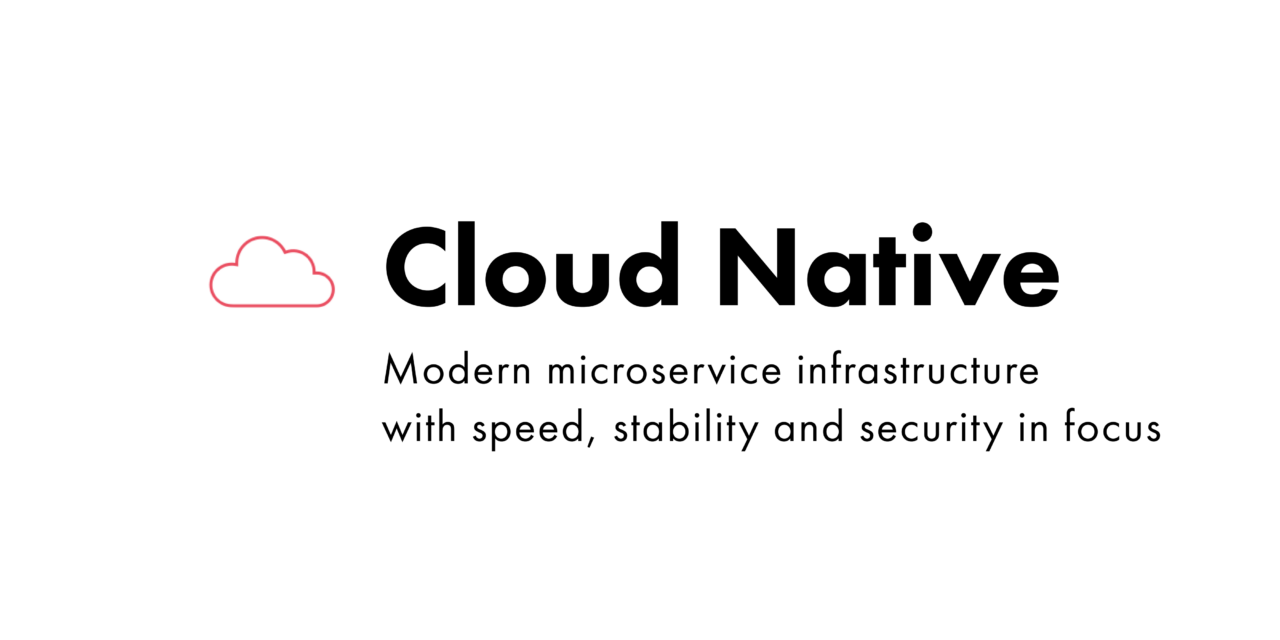
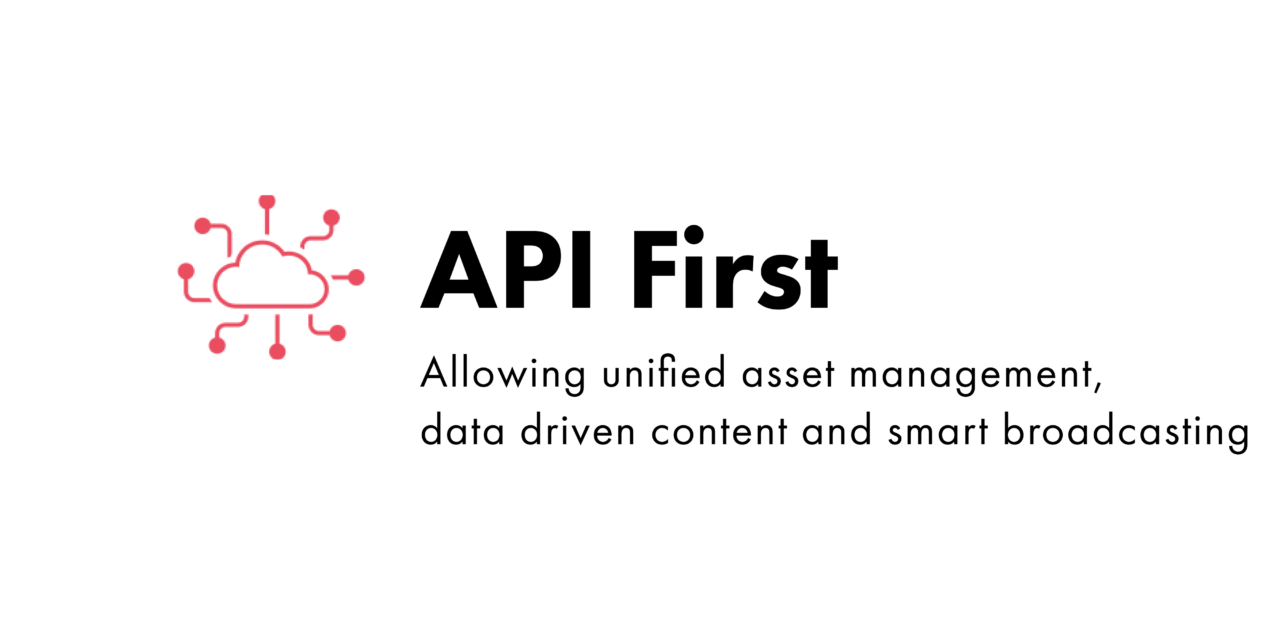

Simple and user-friendly interface
With Signage Player, it’s not just about displaying content; it’s about creating experiences that resonate. Whether planning a dynamic advertising campaign or an informative display, our software is designed to make your content creation journey smooth and straightforward.
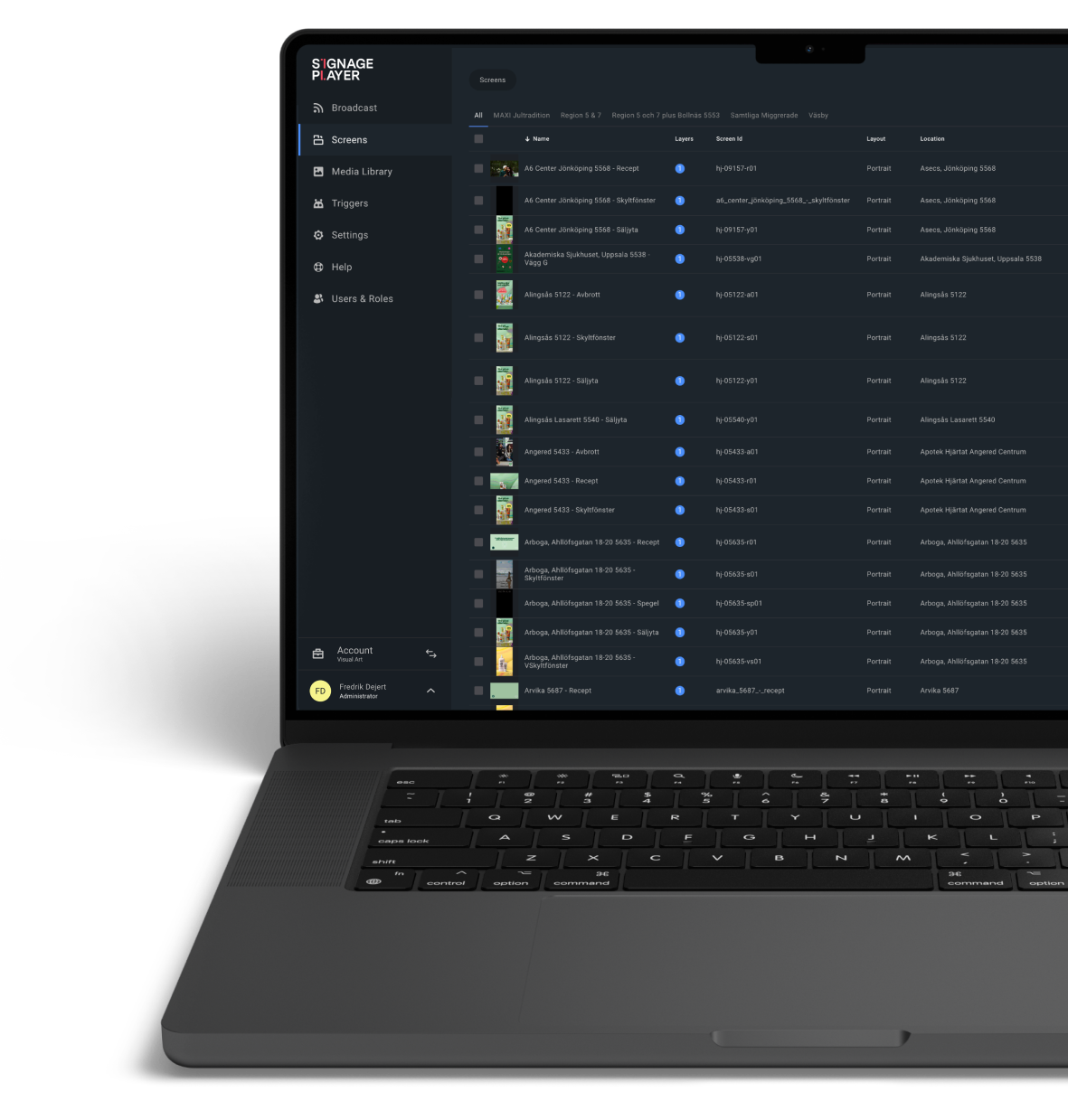
Security and full-scale monitoring
Signage Player is engineered with top-tier security measures, ensuring your digital fleet remains protected against unauthorized access and cyber threats.
With Signage Player, you’re not just creating and broadcasting content; you’re commanding a secure network. Real-time monitoring and full control over every screen in your fleet. From remote updates to instant adjustments.
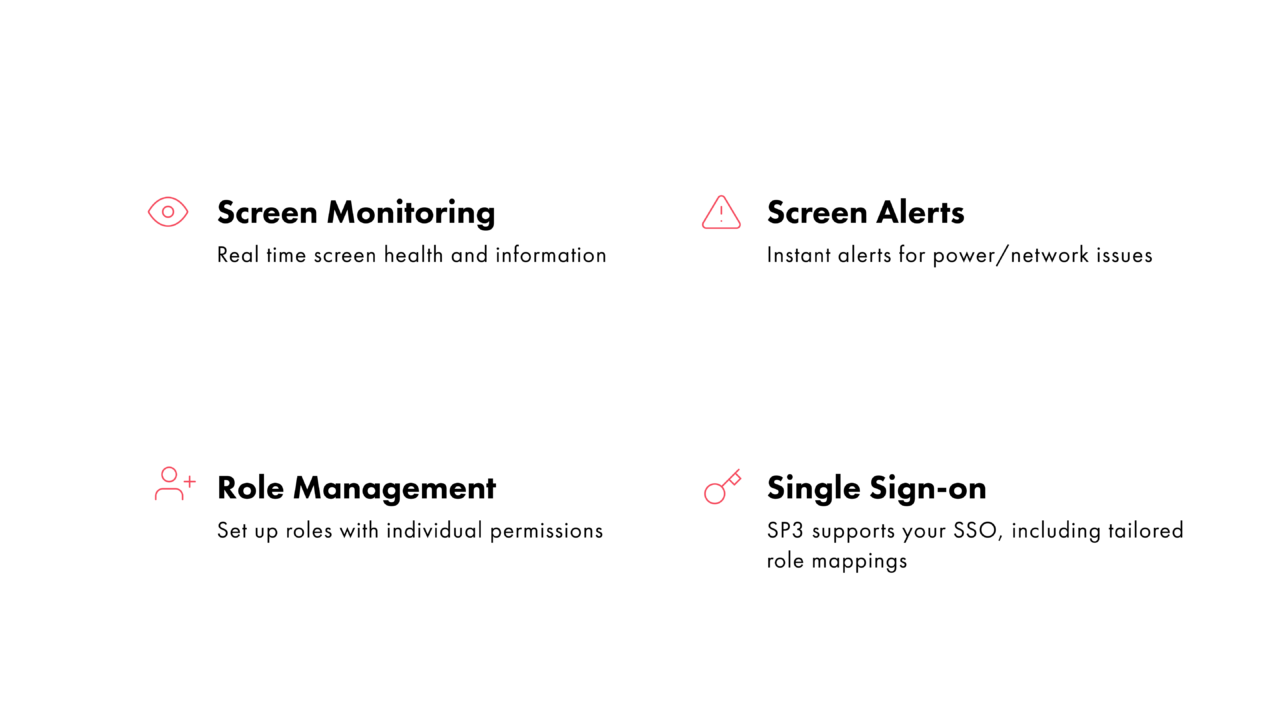
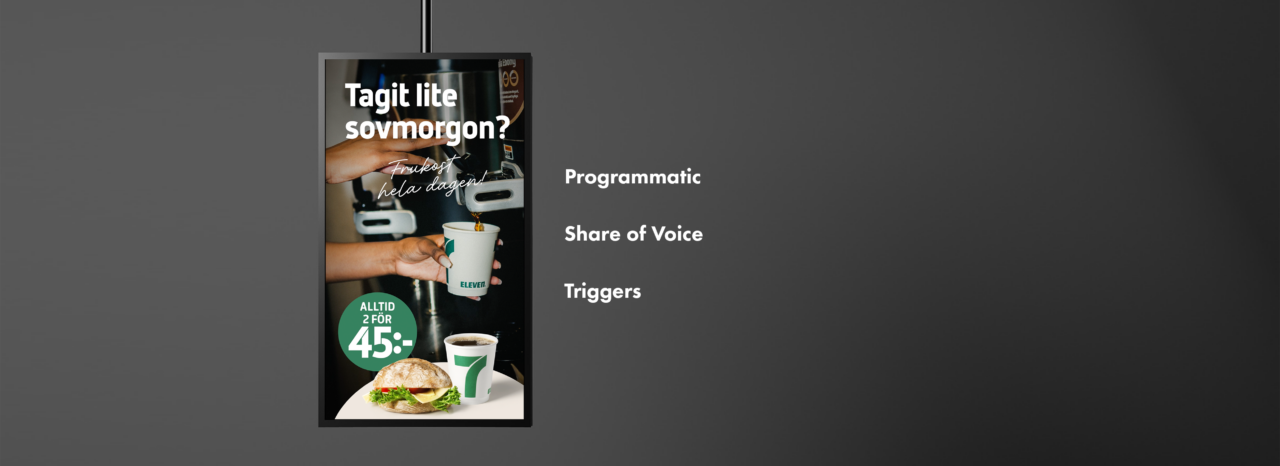
Integrations
Signage Player has a well-documented API for seamless integration with your systems. This empowers customization, automation, and interoperability to enhance your signage experience and unlock new efficiencies.
With seamless content management, unparalleled integration, machine learning capabilities (AI), and full-scale monitoring, cloud-native.
Signage Player empowers you to curate and deliver impactful visual experiences.
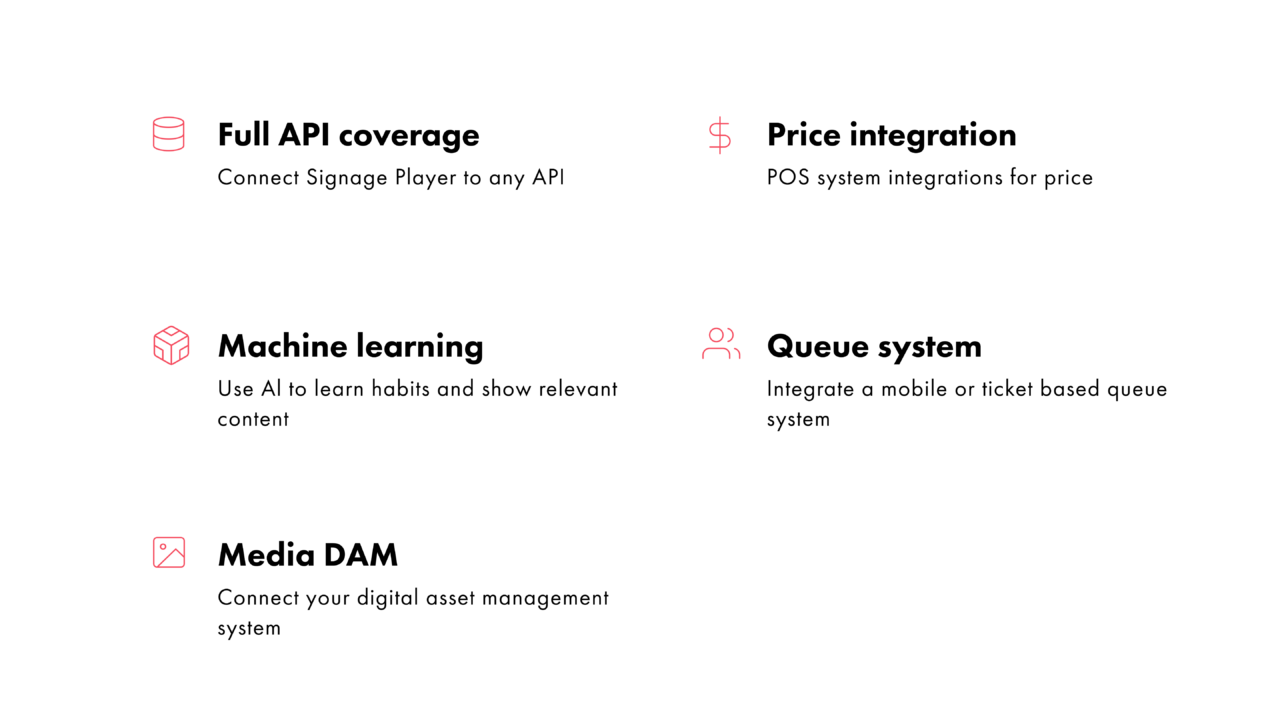
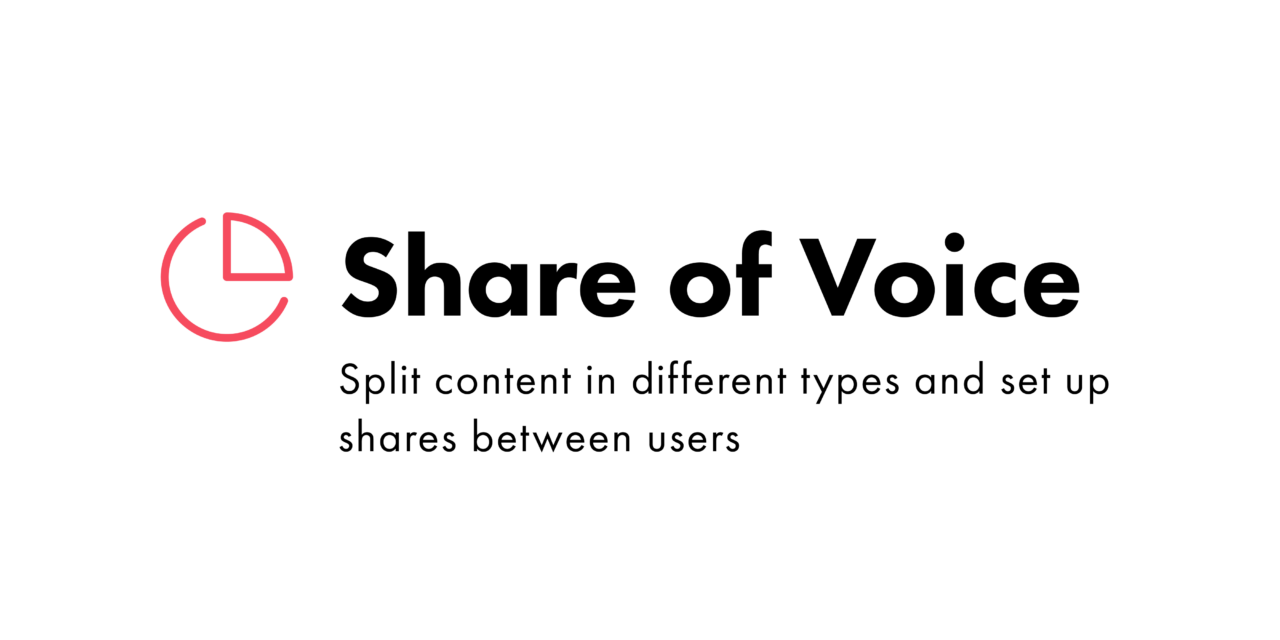
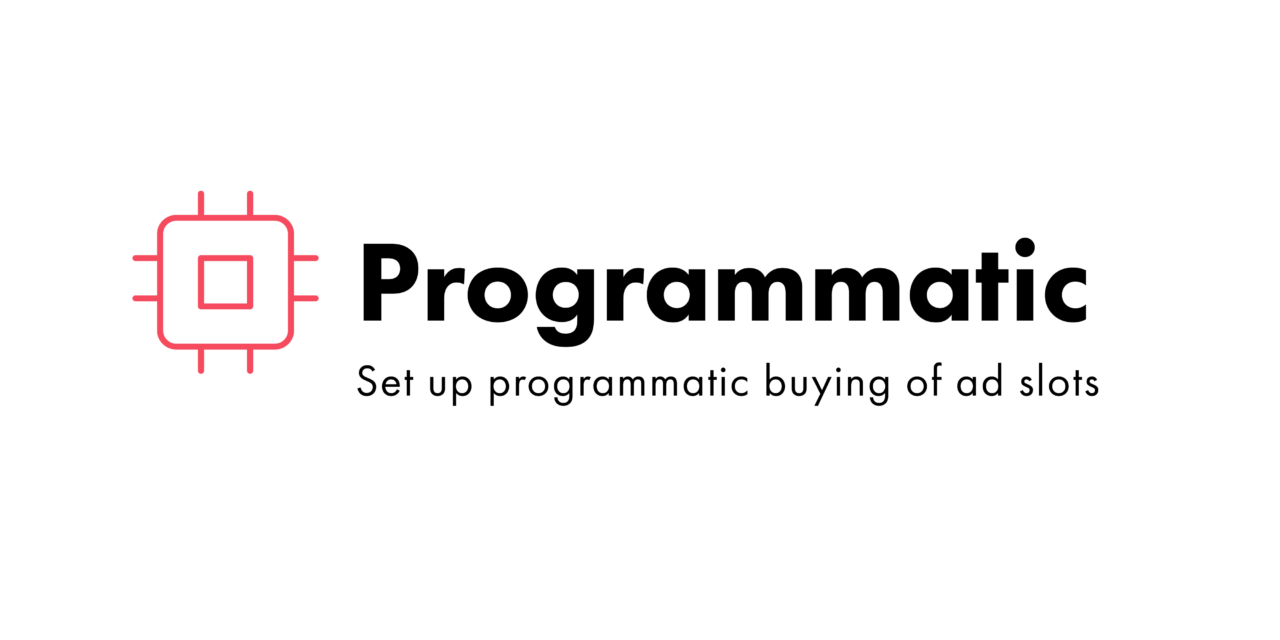
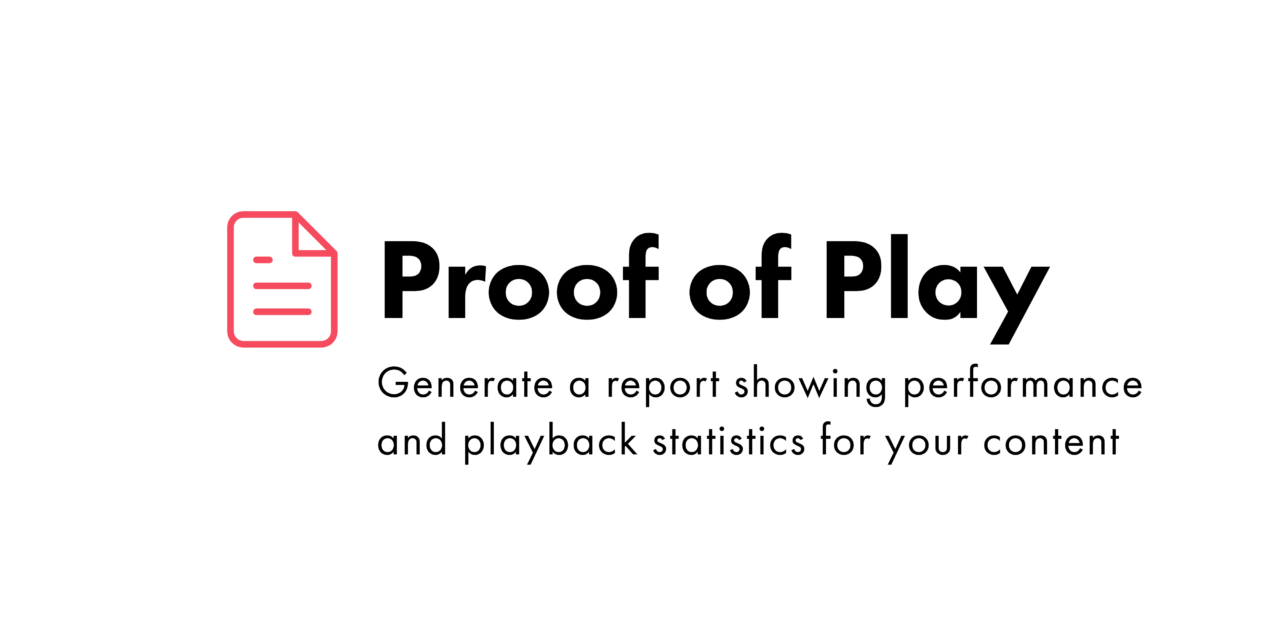
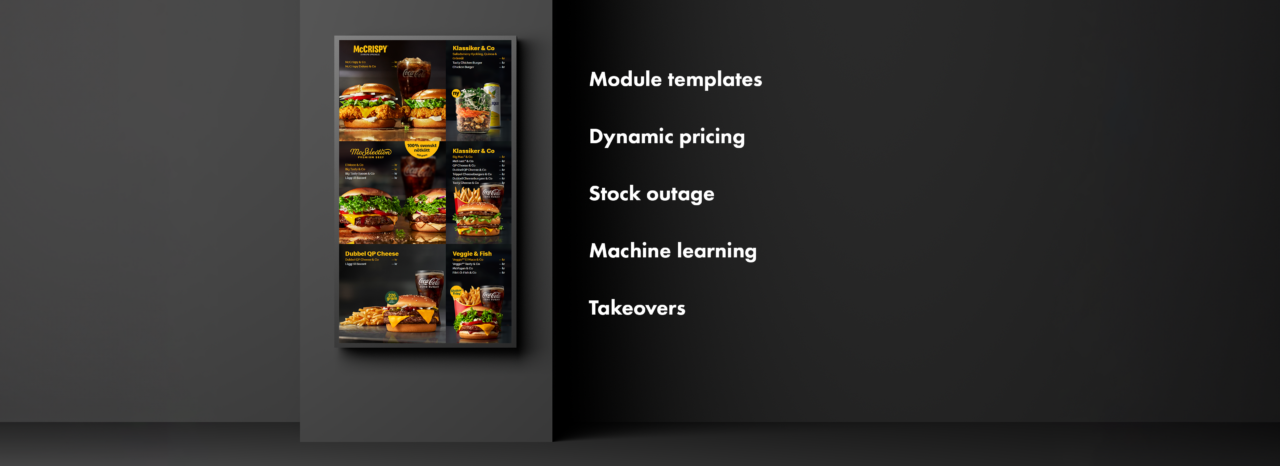
Content functions
Signage Player brings your digital displays to life with smart, dynamic content management. It’s simple to use and lets you effortlessly create, schedule, and broadcast content across any number of screens.
Our software’s intuitive content functions allow for real-time adaptation, ensuring your message resonates with the right audience at the right moment.
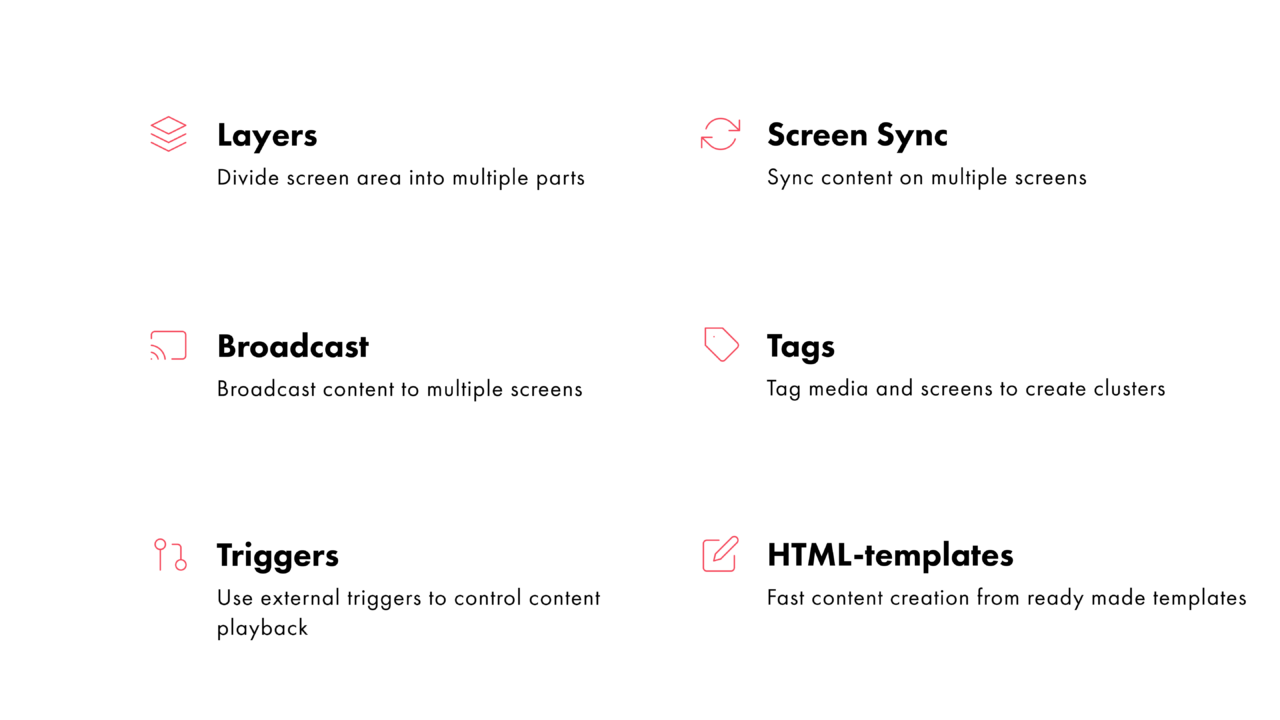
Supports all hardware






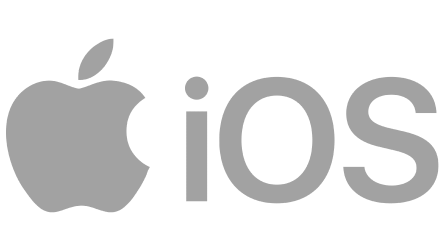


Do you want to use or re-sell world-class Digital Signage Software?
Let us give you a free demo!